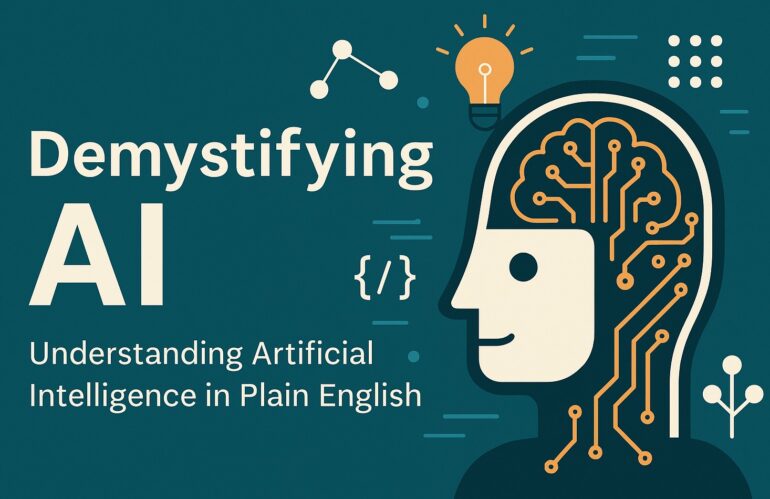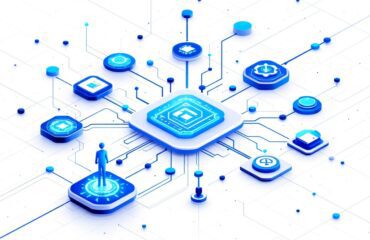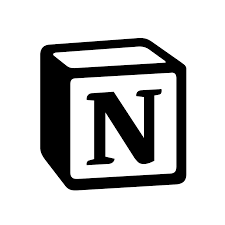Let’s be honest — “artificial intelligence” sounds like something out of a sci-fi movie, not your lesson planning session or school budget meeting.
But here’s the truth:
AI is already in your school. You just might not call it that.
It’s helping to grade assignments, suggest reading levels, generate lesson hooks, translate parent emails, and flag student data trends. And when used thoughtfully, it can make teaching more personalized, efficient, and equitable — without requiring you to become a robot-whisperer.
Let’s break AI in Education down, plain and simple.
🤖 What Is Artificial Intelligence, Really?
AI is any technology that simulates human thinking — like solving problems, recognizing patterns, or generating ideas. It’s not magic, and it’s not replacing teachers. At its best, it’s like a digital assistant that:
- Helps you save time
- Offers scaffolds for students
- Personalizes content and feedback
- Highlights trends in student data
If you’ve used Grammarly, Google Translate, or auto-captioning in Google Meet — you’ve already used AI.
🧠 What AI Can Do in Schools
Here are a few real examples of AI in education:
- Personalize Learning
Platforms like Khan Academy or i-Ready adjust content in real time based on how a student performs. Struggling? You get scaffolding. Ready to move ahead? It challenges you. - Automate the Repetitive Stuff
Teachers use AI to auto-generate quizzes, translate notes, draft parent updates, and even build lesson plan outlines in seconds. - Support Differentiation
AI tools can rephrase reading passages, offer audio versions, and suggest different question types based on need — especially helpful for ELLs and students with IEPs. - Analyze and Act on Data
Instead of scanning spreadsheets, AI can flag students at risk, show learning gaps, and recommend next steps.
💡 But AI Won’t Replace Teachers — And That’s the Point
Here’s what AI can’t do:
- Inspire students with a story
- Read the room during a lesson
- Mediate a conflict between classmates
- Design culturally responsive, relationship-driven instruction
In short: AI can deliver information. You deliver meaning.
Let it handle the repetitive work, so you can focus on what only humans can do: motivate, mentor, and model.
🚫 Common Misconceptions with AI in Education (Busted)
| Myth | Truth |
|---|---|
| “AI will replace teachers” | Nope. It supports teachers by saving time and enhancing lessons |
| “It’s too complicated” | If you can type a question, you can use a prompt |
| “Only techy schools can afford it” | Many tools are free or already built into platforms you use |
| “We’re not using AI yet” | If you use auto-translate or adaptive software, you already are |
📘 Tech Terms, Translated
| Term | What It Really Means |
|---|---|
| AI | Computer doing tasks that normally need human smarts |
| Machine Learning | AI learning patterns over time to improve results |
| Natural Language Processing (NLP) | How computers read and respond to human language |
| Generative AI | AI that creates things — like writing, code, or images |
| Algorithm | Step-by-step instructions a computer follows to solve problems |
🧭 Want to Start Exploring AI? Try This:
- Pick one small task you do regularly (e.g., writing emails, creating quizzes).
- Use a free tool like ChatGPT or MagicSchool.ai to help you draft something.
- Tweak it — don’t take it as-is. You’re still the editor-in-chief.
- Reflect: Did it save you time? Could it help a student?
✅ Bottom Line: AI Is a Tool — Not a Threat
If you’re an educator, you don’t need to learn how to build AI.
You just need to learn how to leverage it.
And when you do, you’ll gain back hours, offer more personalized support, and unlock entirely new creative workflows — all while keeping your role as the heartbeat of the classroom.








